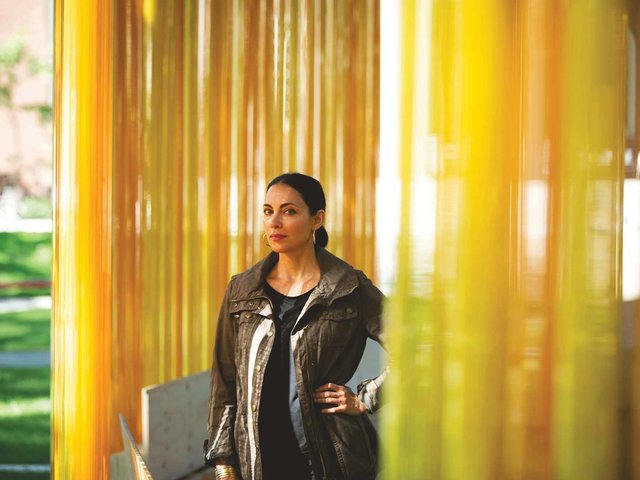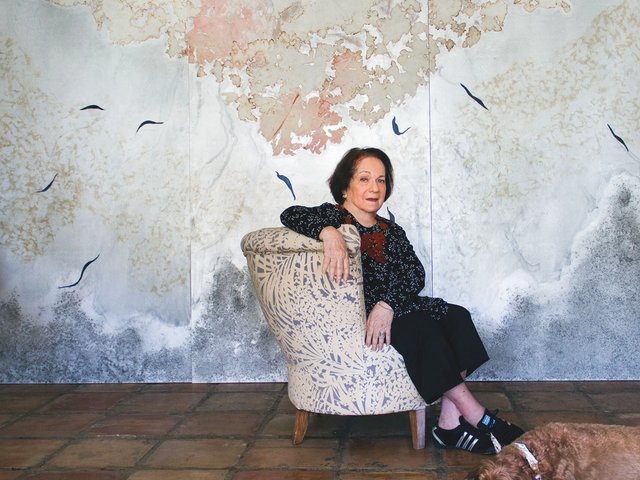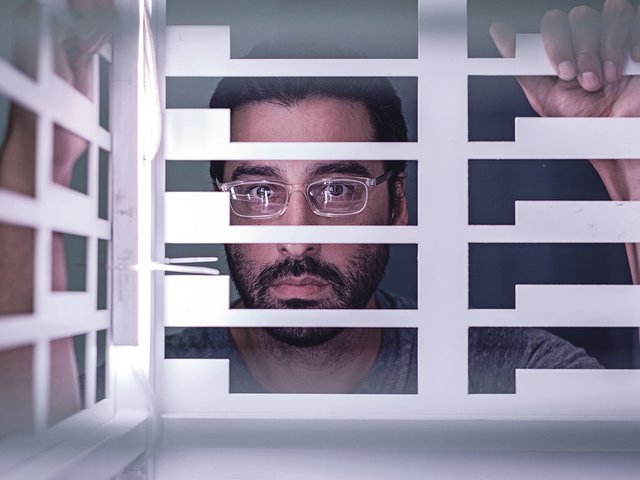Anne Duk Hee Jordan draws inspiration from the natural world. Employing elements of sculpture, performance, video, kinetics and robotics, she considers the relationships between art, technology and the environment. For her first solo show in the US, I will always weather with you at The Bass, Jordan is presenting a multi-sensory, immersive installation that highlights the connections between the human and nonhuman through the lens of Earth’s powerful weather systems.
Taking the form of a large room with mirrored walls and a video on the floor, the exhibition places the viewer in different atmospheric zones—land, water and air—as weather events comprising real footage, artificial intelligence and generative effects unfold underfoot. Accompanying the imagery are sounds of ominous storms and dramatic musical scores. Interactive features activate the space, including fog, lasers, gusts of wind and robotic creatures. Speaking from her studio in Berlin, the artist shared insight into her process and how she approached the exhibition in the context of Miami’s fragile environment.
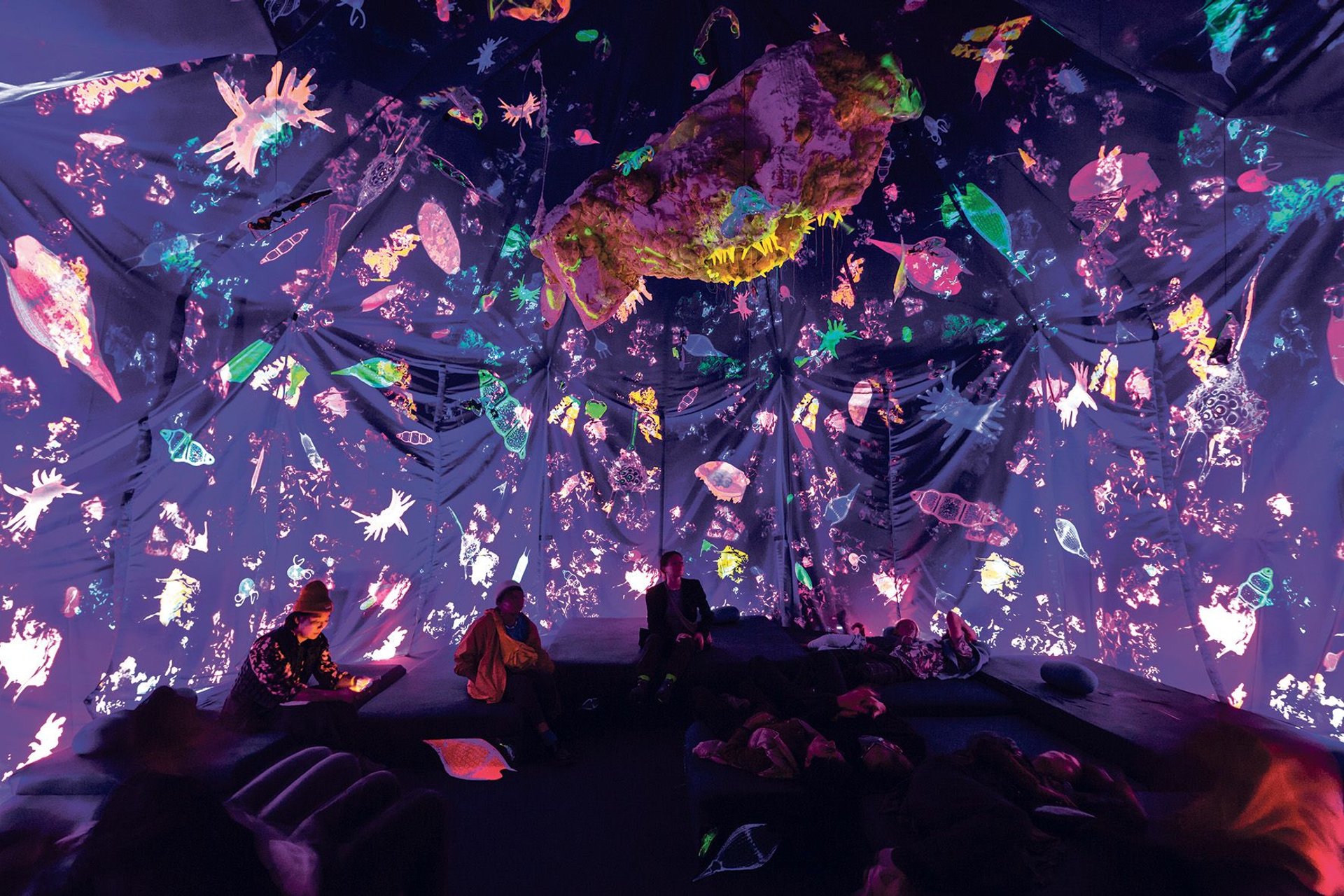
Installation view of Worlds Away (2022), part of the group show YOYI! Care, Repair, Heal at Berlin’s Gropius Bau museum in 2022 Photo: Laura Fiorio; image courtesy of the artist
The Art Newspaper: You wear many hats that inform your artistic practice. Can you share a bit about your background?
Anne Duk Hee Jordan: I was born in Korea and grew up in Germany. I came to art late; I was a chef and therapist first and studied electro-engineering briefly as well. I spend much of my time diving—free diving, rescue diving, deep-sea diving. When I did start studying art, I began with sculpture and traditional materials like wood and clay, but the art department [at my school] was very open to experimentation. This allowed me to work with kinetics, and I began building machines and studying how machines and technology interact.
How did you become interested in ecology?
I was in nature from an early age. We had horses, and I had a crow who always stayed with me. When I was eight or nine, I became a member of a fishing club and felt bad for the fish, so I used to move them to another pond so they wouldn’t be killed. I am more interested in animals than humans. The older I grew, the more I became interested in permaculture and how all species are connected.
I love to understand the invisible forces of the world. There are inhabitants of this planet that we can’t see, but when you look closely and learn more about the microscopic, it’s mind-blowing. Even though we can’t see this invisible world, we see the effects of it.
Interspecies connections and invisible forces are at the centre of your show at The Bass.
Yes, they are. The Bass show relates to work I started years ago researching weather events like hurricanes and tornadoes, and how these are related to each other and to the ocean. I am interested in how separate—or seemingly separate—forces connect. I’ve had the idea and the title of I will always weather with you for a long time. It speaks directly to the viewer and addresses how we will always have to cope with catastrophe. With The Bass’s location in Miami, it made sense to take this further and think about how the forces underneath the water relate to those above water—in other words, the weather. In the show, this takes the form of an immersive space where visitors are in a large infinity room walking upon the stratosphere.
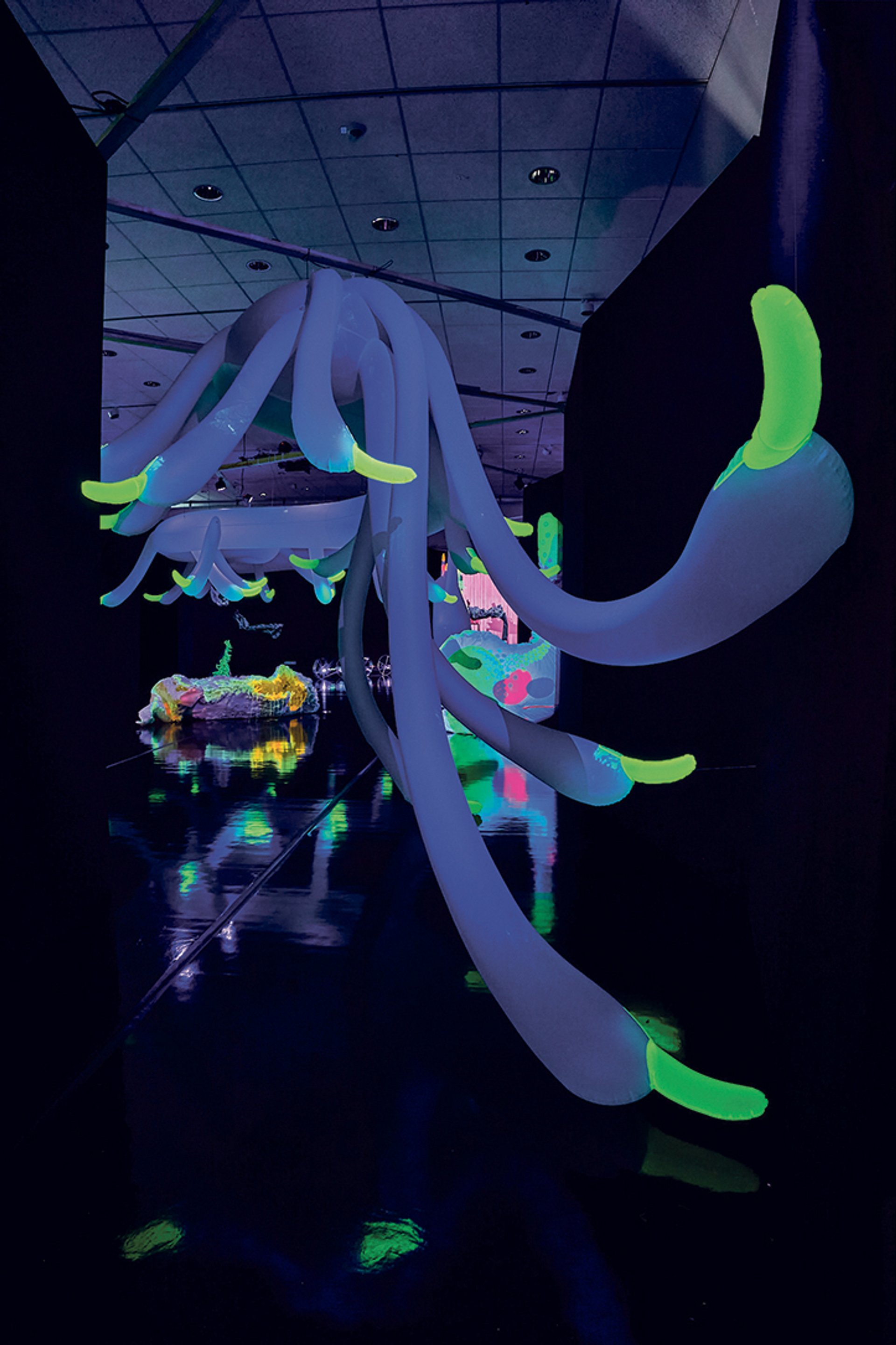
The Worm (2021) in Sex Ecologies, a 2022 group show at Kunsthall Trondheim Photo: Daniel Vincent Hansen, image courtesy of the artist
What specifically draws you to the ocean?
The ecosystem is very different from what we have on land. Our bodies react differently in the water; our heart rates slow in the coldness of the ocean, for example, so we could live longer underwater. I’m fascinated by the coolness, the silence, how sounds travel and how images appear bigger. These are things I considered in the show.
The ocean is particularly relevant for Miami, as it is a driving factor for tourism, but it also contributes to a fragile ecosystem and, as you mentioned, weather events like hurricanes.
This is very important for me, and it is a serious topic, but I also incorporate humour, like a Lisa Simpson lifeguard chair that visitors can sit on to change their viewpoint. Sometimes the video shows people enjoying a beach, while other times you see massive waves hitting the coast and flooding entire villages. It’s important for me that people consider their relationships with nature, which are often in ways we don’t see. Another component to the show is the three ponds that surround the video. Inside these ponds are cloud-like robots that refer to our data clouds, which are massive. We think they’re invisible, but data storage and technology use huge amounts of energy for cooling and heating. All of these things contribute to climate change.
There are inhabitants of this planet that we can’t see, but when you learn more about the microscopic it’s mind-blowing
Do you think making this visible will help people understand their impact on the environment?
I don’t know if I can show people that. Even people who think climate change isn’t real have to cope with the effects. I think when people have to move because a storm destroyed their home, they should understand climate change. We live on a very old, grumpy, fragile planet and we are only a small part of its history. We created the problem, but we can fix it if we are more conscious of what we do and how we do it. If we don’t, at a certain point it will be over.
• Anne Duk Hee Jordan: I will always weather with you, The Bass, Miami Beach, until 23 June 2024



